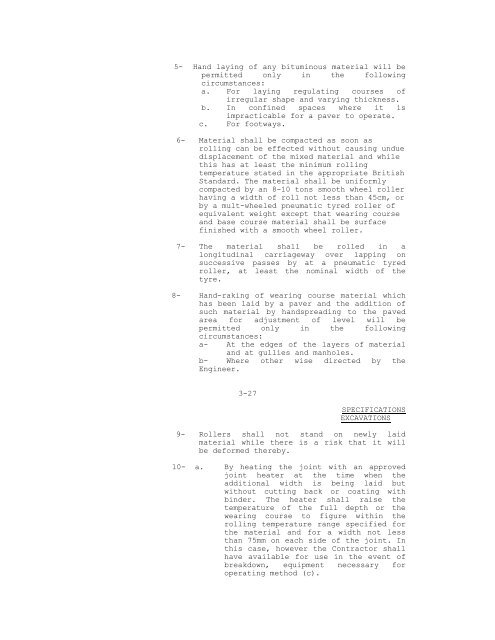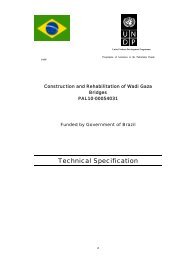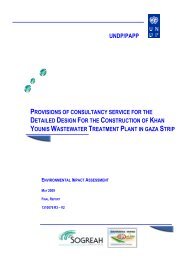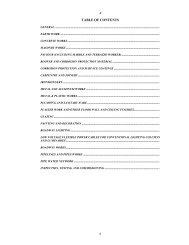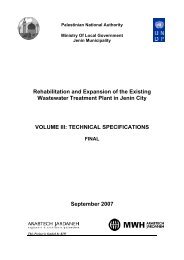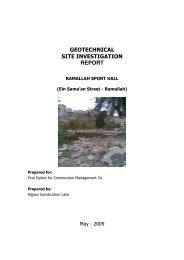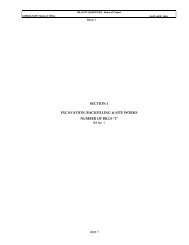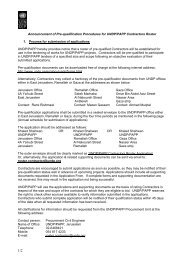GENERAL AND PARTICULAR SPECIFICATIONS OF ... - UNDP
GENERAL AND PARTICULAR SPECIFICATIONS OF ... - UNDP
GENERAL AND PARTICULAR SPECIFICATIONS OF ... - UNDP
You also want an ePaper? Increase the reach of your titles
YUMPU automatically turns print PDFs into web optimized ePapers that Google loves.
5- Hand laying of any bituminous material will be<br />
permitted only in the following<br />
circumstances:<br />
a. For laying regulating courses of<br />
irregular shape and varying thickness.<br />
b. In confined spaces where it is<br />
impracticable for a paver to operate.<br />
c. For footways.<br />
6- Material shall be compacted as soon as<br />
rolling can be effected without causing undue<br />
displacement of the mixed material and while<br />
this has at least the minimum rolling<br />
temperature stated in the appropriate British<br />
Standard. The material shall be uniformly<br />
compacted by an 8-10 tons smooth wheel roller<br />
having a width of roll not less than 45cm, or<br />
by a mult-wheeled pneumatic tyred roller of<br />
equivalent weight except that wearing course<br />
and base course material shall be surface<br />
finished with a smooth wheel roller.<br />
7- The material shall be rolled in a<br />
longitudinal carriageway over lapping on<br />
successive passes by at a pneumatic tyred<br />
roller, at least the nominal width of the<br />
tyre.<br />
8- Hand-raking of wearing course material which<br />
has been laid by a paver and the addition of<br />
such material by handspreading to the paved<br />
area for adjustment of level will be<br />
permitted only in the following<br />
circumstances:<br />
a- At the edges of the layers of material<br />
and at gullies and manholes.<br />
b- Where other wise directed by the<br />
Engineer.<br />
3-27<br />
<strong>SPECIFICATIONS</strong><br />
EXCAVATIONS<br />
9- Rollers shall not stand on newly laid<br />
material while there is a risk that it will<br />
be deformed thereby.<br />
10- a. By heating the joint with an approved<br />
joint heater at the time when the<br />
additional width is being laid but<br />
without cutting back or coating with<br />
binder. The heater shall raise the<br />
temperature of the full depth or the<br />
wearing course to figure within the<br />
rolling temperature range specified for<br />
the material and for a width not less<br />
than 75mm on each side of the joint. In<br />
this case, however the Contractor shall<br />
have available for use in the event of<br />
breakdown, equipment necessary for<br />
operating method (c).


